
Laura is a 1944 American film noir produced and directed by Otto Preminger. It stars Gene Tierney and Dana Andrews, along with Clifton Webb, Vincent Price, and Judith Anderson. The screenplay by Jay Dratler, Samuel Hoffenstein, and Betty Reinhardt is based on the 1943 novel Laura by Vera Caspary. Laura received five nominations for the Academy Awards, including for Best Director, winning for Best Black and White Cinematography. In 1999, Laura was selected for preservation in the United States National Film Registry by the Library of Congress as being "culturally, historically, or aesthetically significant". The American Film Institute named it one of the 10 best mystery films of all time, and it also appears on Roger Ebert's "Great Movies" series.

Elizabeth Ruth Grable was an American actress, pin-up girl, dancer, model, and singer.

Victor John Mature was an American stage, film, and television actor who was a leading man in Hollywood during the 1940s and 1950s. His best known film roles include One Million B.C. (1940), My Darling Clementine (1946), Kiss of Death (1947), Samson and Delilah (1949), and The Robe (1953). He also appeared in many musicals opposite such stars as Rita Hayworth and Betty Grable.

Carole Landis was an American actress and singer. She worked as a contract player for Twentieth Century-Fox in the 1940s. Her breakout role was as the female lead in the 1940 film One Million B.C. from United Artists. She was known as "The Ping Girl" and "The Chest" because of her curvy figure.
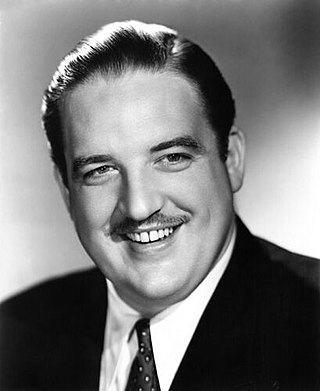
Samuel Laird Cregar was an American stage and film actor. Cregar was best known for his villainous performances in films such as I Wake Up Screaming (1941), This Gun For Hire (1942) and The Lodger (1944).

Fear in the Night is an American 1947 film noir crime film directed by Maxwell Shane, starring Paul Kelly and DeForest Kelley. It is based on the Cornell Woolrich story "And So to Death". Woolrich is credited under pen name William Irish. The film was remade by the same director in 1956 with the title Nightmare this time starring Edward G. Robinson playing the cop and Kevin McCarthy.
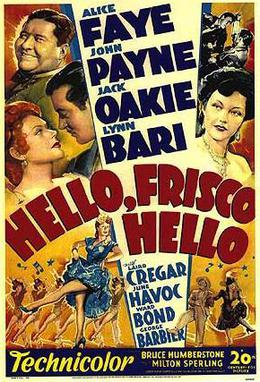
Hello, Frisco, Hello is a 1943 American musical film directed by H. Bruce Humberstone and starring Alice Faye, John Payne, Lynn Bari, and Jack Oakie. The film was made in Technicolor and released by 20th Century-Fox. This was one of the last musicals made by Faye for Fox, and in later interviews Faye said it was clear Fox was promoting Betty Grable as her successor. Released during World War II, the film became one of Faye's highest-grossing pictures for Fox.

Moon Over Miami is a 1941 American musical comedy film directed by Walter Lang with Betty Grable and Don Ameche in leading roles and co-starring Robert Cummings, Carole Landis, Jack Haley and Charlotte Greenwood. It was adapted from the play by Stephen Powys. This was previously adapted into a 1938 film titled Three Blind Mice directed by William A. Seiter and starring Loretta Young, Joel McCrea and David Niven.

Vicki is a 1953 American film noir directed by Harry Horner and starring Jeanne Crain and Jean Peters. It was based on the novel I Wake Up Screaming, written by Steve Fisher.
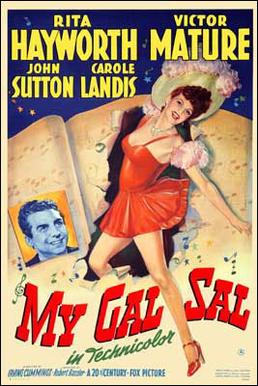
My Gal Sal is a 1942 American musical film distributed by 20th Century Fox and starring Rita Hayworth and Victor Mature. The film is a biopic of 1890s German-American composer / songwriter Paul Dresser and singer Sally Elliot. It was based on a biographical essay, sometimes erroneously referred to as a book, by Dresser's younger brother, novelist Theodore Dreiser. Some of the songs portrayed as Dresser's work were actually written by him, but several others were created in the 1890s style for the film by the Hollywood songwriting team of Ralph Rainger and Leo Robin.

Rear Window is a 1998 American made-for-television crime-drama thriller film directed by Jeff Bleckner. The teleplay by Larry Gross and Eric Overmyer is an updated adaptation of the classic 1954 film of the same name directed by Alfred Hitchcock which was based on the short story It Had to Be Murder by Cornell Woolrich. It was broadcast in the United States by ABC on November 22, 1998. It stars Christopher Reeve, Daryl Hannah, and Robert Forster. For his performance, Reeve was nominated for a Golden Globe and won a Screen Actors Guild Award.

H. Bruce "Lucky" Humberstone was an American film director. He was previously a movie actor, a script clerk, and an assistant director, working with directors such as King Vidor, Edmund Goulding, and Allan Dwan.

Springtime in the Rockies is an American Technicolor musical comedy film released by Twentieth Century Fox in 1942. It stars Betty Grable, with support from John Payne, Carmen Miranda, Cesar Romero, Charlotte Greenwood, and Edward Everett Horton. Also appearing were Grable's future husband Harry James and his band. The director was Irving Cummings. The screenplay was based on the short story "Second Honeymoon" by Philip Wylie.
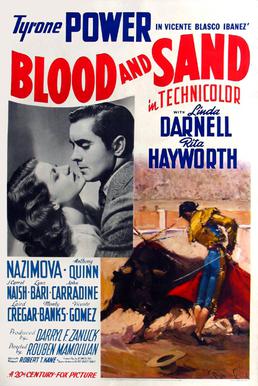
Blood and Sand is a 1941 American Technicolor film drama starring Tyrone Power, Linda Darnell, Rita Hayworth and Nazimova. Directed by Rouben Mamoulian, it was produced by 20th Century Fox and was based on the 1908 Spanish novel Blood and Sand by Vicente Blasco Ibáñez. The supporting cast features Anthony Quinn, Lynn Bari, Laird Cregar, J. Carrol Naish, John Carradine and George Reeves. Rita Hayworth's singing voice was dubbed by Gracilla Pirraga.
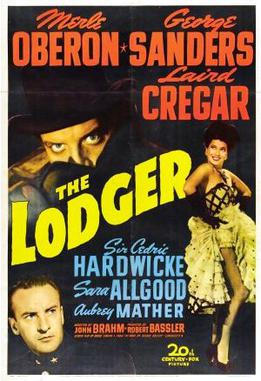
The Lodger is a 1944 American horror film about Jack the Ripper, based on the 1913 novel of the same name by Marie Belloc Lowndes. It stars Merle Oberon, George Sanders, and Laird Cregar, features Sir Cedric Hardwicke, and was directed by John Brahm from a screenplay by Barré Lyndon.
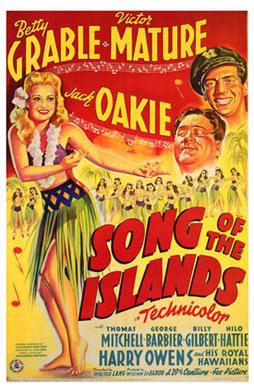
Song of the Islands is a 1942 musical comedy film starring Betty Grable and Victor Mature. It was directed by Walter Lang and released through 20th Century Fox.

Red, Hot and Blue is a 1949 American musical comedy film directed by John Farrow and starring Betty Hutton, Victor Mature, William Demarest and June Havoc. It was released by Paramount Pictures. Hutton plays an actress who gets mixed up with gangsters and murder. Frank Loesser wrote the songs and plays a key role. The film has no connection to Cole Porter's play of the same name.
Stephen Gould Fisher was an American author best known for his pulp stories, novels and screenplays. He is one of the few pulp authors to go on to enjoy success as both an author in "slick" magazines, such as the Saturday Evening Post, and as an in-demand writer in Hollywood.

Convicted is a 1938 American/Canadian action film directed by Leon Barsha. It stars Charles Quigley, Marc Lawrence and 19-year-old Rita Hayworth, on the verge of Hollywood stardom. This is the last of the quota quickies made for the British market by producer Kenneth J. Bishop in Victoria, B.C. from 1933 to 1937. The screenplay by Edgar Edwards was based on the Cornell Woolrich story Face Work.
Wake Up Screaming may refer to:

















